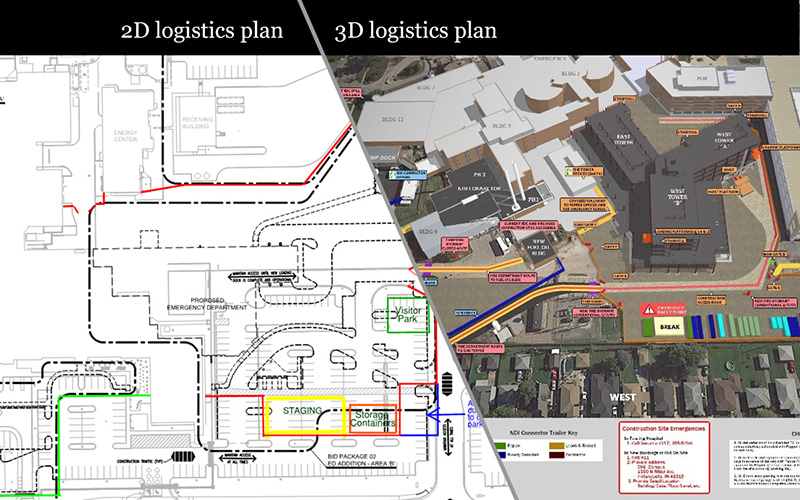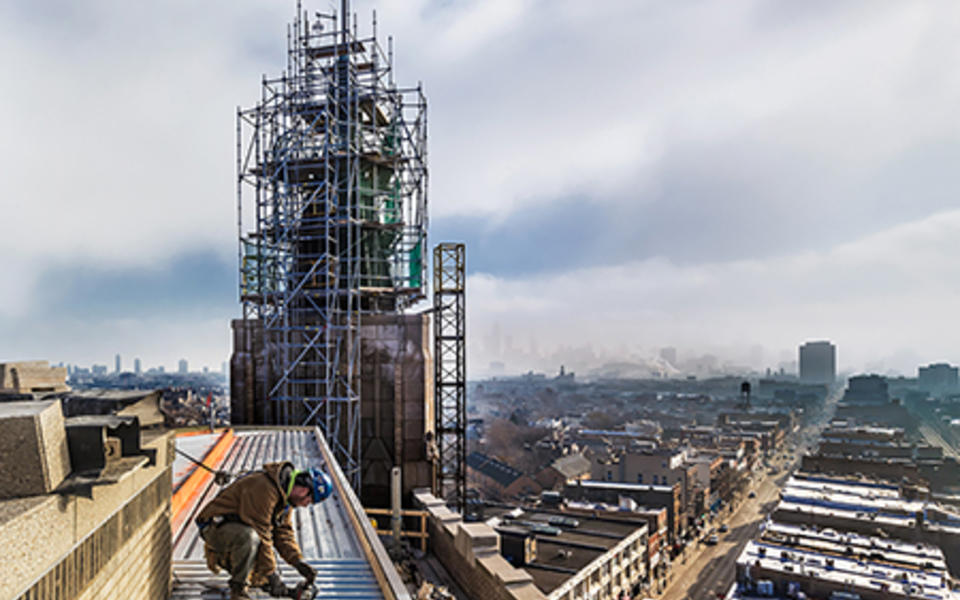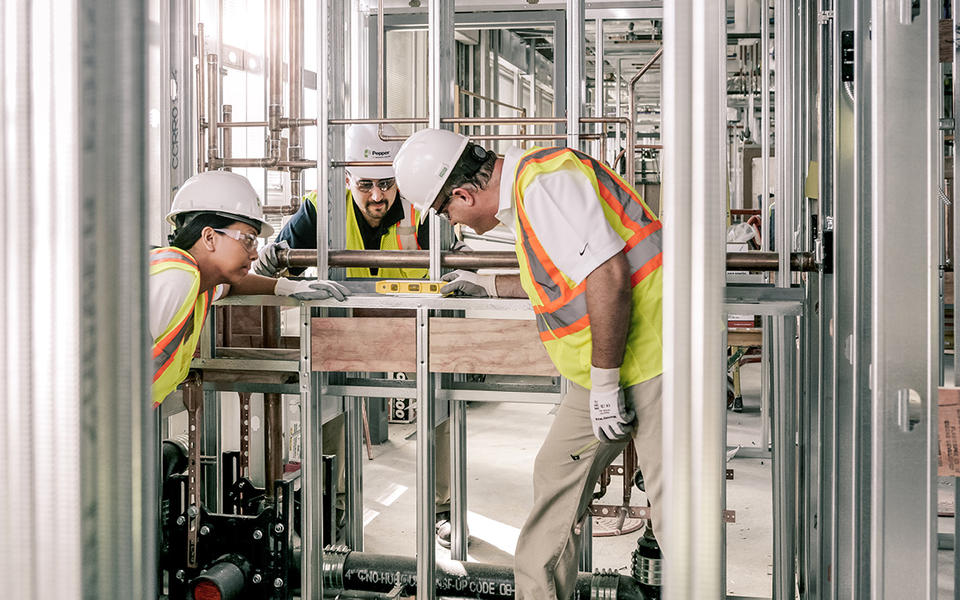Virtual construction & technology, Lean Construction
When writing about visualization, it would be easy to start listing off all the ways that virtual construction has improved project visualization - from sales, to estimating, to supporting design teams, to the way we install work in the field. We have provided some ground-breaking visuals to our clients and project teams. But to understand the gains we have made in these areas and the vision for where we still want to go, it’s important to understand that processes within our company have changed and continue to evolve to help our clients and teams gain maximum benefit from the technology.
In the beginning
When I started working at Pepper in 2010, BIM was first starting to take off in our industry. Considerable focus was placed on the “I” in BIM: the Information. While the industry didn’t quite know what to do with the “I” yet, everyone knew that it was supposed to be the most important part.
At first, our industry primarily used the 3D models for MEP coordination. We wondered if the models didn’t have any information in them, if we were really doing BIM. While we were on board with utilizing the technology, there were concerns about liability, who owned the model and risks associated with the contractor modeling anything ourselves. And we weren’t alone; architects were also hesitant to share their design models with us.
In fact, at the time, the prevailing thought was that I would never really model anything. I would just work with models that our trade partners created. Our short-sighted view questioned: What would we even model? How would we use it? What would be the value?
Fast-forward to 2017, and I’m excited to say that we’ve long broken through these barriers. The “I” in BIM has infinite value, and there are plenty of blog posts we could do on just the subject of “I,” but we also see the value of a 3D model by itself.
As our project teams become more familiar with what we can provide, the possibilities continue to expand.
Focus on value
As the technology evolves, we must keep our focus on what adds value to our clients and our projects teams. In simple terms, any visual we provide has two jobs:
- Enable more informed and collaborative decision making
- Enhance communication of an agreed-upon plan to project stakeholders
- Cost and schedule savings by reducing time to make decisions and solve problems
- Improved client understanding of the project
- Improved project safety
- Improved project quality
These tools aren’t just an addition to our projects. When they are truly integrated and strategically planned, only then do our teams and clients receive the maximum benefit.
Visualization today
When it comes to improving project visualization, through virtual design and construction, we’ve come a long way.
Validating operational performance
Doctors were struggling to visualize the space and the functionality of the equipment with the physical mockup. This resulted in the project being put on hold while decisions were being made. Our project team suggested a virtual mock-up to allow the end users to see the actual equipment in a virtual environment. After reviewing the virtual mockup and making changes in the model in real-time, the doctors and nurses better understood the space and approved the design and equipment layout in one day. Click here to read the full story.
Envisioning the space
A client wanted to gain a better understanding of materials and architectural aesthetics in the new lobby of their corporate headquarters. Since size and uniqueness of the space were not conducive to constructing a physical mockup, the team developed a virtual mockup of the entire space. It was a more cost-effective solution and resulted in affirmation that the space would meet the client’s needs with the look they intended.
Communicating our assumptions during preconstruction
Often we provide our clients with budgets for buildings that are still conceptual in nature. Before BIM, we provided a narrative of what our budget represents, along with a few accompanying sketches. Now, we are shifting toward providing a 3D model that illustrates what our assumptions mean - not to dictate the design but to help our clients better understand what the numbers represent. It allows the design and budget to be developed more closely in tandem.
Communicating the site logistics plan
For years, the image below has represented a somewhat industry-standard logistics plan. It’s a site plan that was generated by the civil engineer and marked up by the project superintendent.
Now we use a highly visual 3D logistics plan to more effectively communicate our plan to project stakeholders who may not be accustomed to reading construction drawings. This format also allows our project teams to better communicate the plan internally and to our trade partners. The image below depicts a site with three significant active projects going on concurrently.
Communicating the schedule
We also take our project schedule and integrate it with the 3D model. Doing this takes what is considered an unreadable document for most outside of the construction industry, and turns it into a dynamic and highly visual representation of the project schedule. Click here to view the video of the entire sequence for the image on the right.
Maximizing productivity and reducing waste with self-perform
Our self-perform group generates 3D models for exterior framing and concrete for estimating. The models are then used to precut and prefabricate materials, when possible, and serve as installation drawings in the field. The visual tells our tradesmen in the field which pre-cut studs to use in each location, which reduces material waste and increases our productivity in the field.
Envisioning the possibilities
The examples above are just a few of the ways virtual construction has changed how we plan and manage our projects. Since I started working at Pepper, we’ve used 3D models to facilitate collaborative quality coordination meetings, develop energy models and inform the development of project specific safety plans. We have been involved in developing virtual reality simulations before they were prevalent, tested hand-held laser scanners and tried out a laser scanning cart for quick and iterative real-time visuals of our project sites.
We are now starting to look at ways to use technology to solve industry-wide problems, like underground utility coordination, and are beginning to work with peer companies to research ways we can use virtual and augmented reality to better prepare the tradesmen in our industry to work more safely on our jobsites.
As new technologies develop, we will continue to look for the value they bring and find ways to leverage them across our industry.
About the Author











